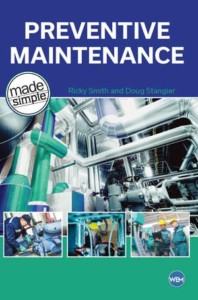 I recently had the pleasure to interview Doug Stangier, co-author of Preventive Maintenance Made Simple. This is another excellent book in the Made Simple series, published by ReliabilityWeb. During the interview, Doug not only provides insights into his book but also into what world class Preventive Maintenance looks like. Anyone new to maintenance and reliability, or seasoned experts can benefit from this great book. Without further delay, here is the interview with Doug.
I recently had the pleasure to interview Doug Stangier, co-author of Preventive Maintenance Made Simple. This is another excellent book in the Made Simple series, published by ReliabilityWeb. During the interview, Doug not only provides insights into his book but also into what world class Preventive Maintenance looks like. Anyone new to maintenance and reliability, or seasoned experts can benefit from this great book. Without further delay, here is the interview with Doug.
The Maintenance & Reliability Series
Short articles on maintenance and reliability engineering subjects.
James Kovacevic is the primary author writing articles for the series.
Never miss an article by signing up for the Maintenance & Reliability Series list to the right. Receive an update weekly highlighting the lastest article.
Let us know your reaction and thought, plus any questions. Please use the comments section below each article.
Taking a Lean Approach to PM Optimization
How You Have Your PMs Addressing The Right Issues, Make The Effective
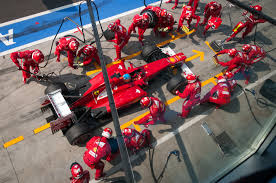 In the previous articles, we looked at what type of analysis to use to evaluate the effectiveness of the PMs and if they are cost effective. Once the PMs have been optimized to ensure they are addressing the right failure modes, then they need to be made efficient. Below is an excerpt from a recent article in SMRP’s Solutions Magazine on how to make PM efficient using the lean tools.
In the previous articles, we looked at what type of analysis to use to evaluate the effectiveness of the PMs and if they are cost effective. Once the PMs have been optimized to ensure they are addressing the right failure modes, then they need to be made efficient. Below is an excerpt from a recent article in SMRP’s Solutions Magazine on how to make PM efficient using the lean tools.
Is Your PM Worth Doing? Use a PM Cost Benefit Analysis to Find Out
How To Determine If The PM Activity Being Performed Is Worth Doing
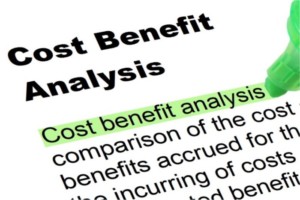 Would you spend $100 every week to prevent a possible issue that will result in a loss of $10? Probably not, so why is that we do that with our maintenance programs every single day? Often, PM and PdM activities are put into place without any thought to the economic impact of the activity. While in theory the PM or PdM activities will prevent or mitigate the consequences of the failure, is implementing one of these activities the right thing to do?
Would you spend $100 every week to prevent a possible issue that will result in a loss of $10? Probably not, so why is that we do that with our maintenance programs every single day? Often, PM and PdM activities are put into place without any thought to the economic impact of the activity. While in theory the PM or PdM activities will prevent or mitigate the consequences of the failure, is implementing one of these activities the right thing to do?
Linking Failure Codes To A Proactive Maintenance Strategy
Using Failure Data to Drive Sustainable Improvements
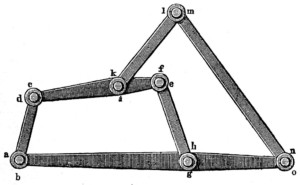 If you are lucky enough to have good failure data history in your CMMS, you are one of the few. But even if you have the data, can you use it to make a difference to your organization? Obviously, the data can be used to perform certain reliability engineering analyses, but what can those without reliability engineering experience do with the data?
If you are lucky enough to have good failure data history in your CMMS, you are one of the few. But even if you have the data, can you use it to make a difference to your organization? Obviously, the data can be used to perform certain reliability engineering analyses, but what can those without reliability engineering experience do with the data?
The P-F Curve Revisited
Understanding The Importance of Proper Equipment Installation
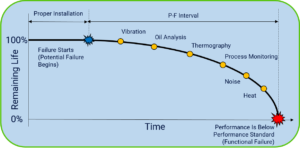 There has been much discussion (and often debate) around the P-F curve. The P-F curve illustrates the relationship between the warning signs that are detectable by various technology or methods and the progression of the failure. What is often not discussed and overlooked, is what happens before the equipment starts to deteriorate.
There has been much discussion (and often debate) around the P-F curve. The P-F curve illustrates the relationship between the warning signs that are detectable by various technology or methods and the progression of the failure. What is often not discussed and overlooked, is what happens before the equipment starts to deteriorate.
If the ultimate goal of an organization is to be proactive and ensure equipment uptime, wouldn’t the organization want to prevent the equipment from failing in the first place and not catch it after it has already started to fail? [Read more…]
Standardize Your Maintenance and Reliability Program

Utilizing Recognized Standards in Your Maintenance & Reliability Program
Imagine being able to easily share information across sites or even organizations. Or how about utilizing a risk management framework that is recognized and agreed upon by all in the organization. Benchmarking made easy? Standards enable this. [Read more…]
Standards? We Don’t Need No Stinking Standards

How Your Organization Can Benefit from Standardization
Imagine if every day you had to relearn a process or use a different CMMS. Chances are you would get virtually nothing accomplished, leaving your plant operating poorly. Now we all know that we having to relearn a process every day or using a new CMMS is not practical nor is it rooted in reality (not to be confused with the Rooted in Reliability podcast). But this type of thing happens more often than you may think. [Read more…]
What’s Stopping Your Organization from Improving?

A View From the Shop Floor on What is Preventing Improvement
I recently had a very interesting discussion with a craftsman at a large automotive manufacturer. During this discussion, he outlined a few of the issues he saw in his plant, and why they weren’t able to overcome them.
The craftsman indicated that he had been reading my previous posts and that it all made sense. In fact, he stated, ” it is common sense, but we don’t have that here”.
Learning About Asset Management

My personal insights on Asset Management
NOTE: This post will be a little different from my normal posts. Instead of discussing a specific topic, I will be covering my journey in understanding Asset Management and some key takeaways from the journey. [Read more…]
Assessing Your Asset Management System

What You Must Know About Assessing Your Asset Management System
Often times organizations want to determine where they in their journey of asset management. This usually takes place in the form of benchmarking or assessing their asset management system against the standard. Before progressing any further, it is important to understand the difference between an assessment and an audit; [Read more…]
The 39 Subjects of Asset Management

Understanding the different functions and disciplines of asset management
The Global Forum on Maintenance and Asset Management (GFMAM) has worked with the major bodies (SMRP, PEMAC, IAM, etc.) to achieve a consensus on the major subjects within asset management.
These subjects are intended to describe the complete scope of topics within asset management. You can download the GFMAM guide for free here. It is important that anyone who wishes to understand asset management has an understanding of each of these topics, and hopefully some experience in each. [Read more…]
The 7 Requirements of an Asset Management System

Understanding the Requirements of the ISO 55001 Standard
When looking through the ISO 55001 standard, one may quickly become overwhelmed with the requirements.
The ISO 55001 standard was written in a way that groups the requirements, making it easier to understand & implement the standard.
This is different that subjects found in asset management (which we will discuss next week). These are the requirements that must be met if one to certify themselves against the ISO 55001 standard. [Read more…]
The Key 3 Asset Management Documents

Understanding these asset management documents will set the stage for an asset management program.
Aligning an organization is a critical step to implementing and ensuring the success of an asset management system. Various change management techniques will be used to bring about the change, but how do you ensure the message, direction, and principles of the asset management program are communicated consistently and clearly? [Read more…]
Making Asset Management Work

Understanding the Concepts and Principles of Asset Management
In order to implement an asset management system, it is vital to understand what is involved in an asset management system. The aspects involved have been tested over time through many different industries. These industries have proven to be what it takes to be successful.
So let’s see what it takes to be successful in asset management. [Read more…]
Why Do You Need An Asset Management Program?

Understanding the Business Benefits of an Asset Management Program
Have you tried to upgrade / replace a piece of equipment due to the high cost of maintenance? What about having the process stopped by procurement because they are not aligned with the high upfront cost?
While there is a generally a common goal of ensuring the long-term success of an organization, the approach is not always cohesive. An asset management program is there to ensure an integrated and cohesive approach is in place. This cohesive approach ensures the organization is working towards a common goal. [Read more…]